Today’s global ocean temperatures hover around 15°C on average. About 400 to 500 million years ago, Earth’s ocean temperatures averaged 35-40°C and atmospheric CO2 concentrations were “5-10x higher than present day values” (Henke et al., 2018). During this period, the marine biosphere thrived (Voosen et al., 2019).
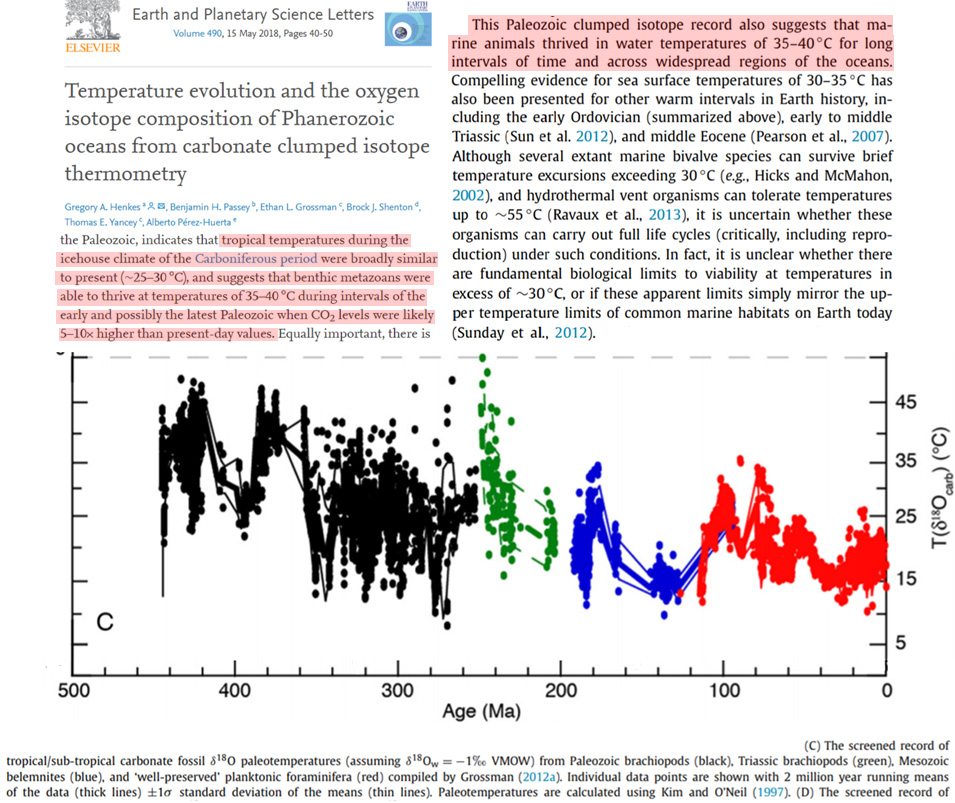
Image Source: Henke et al., 2018
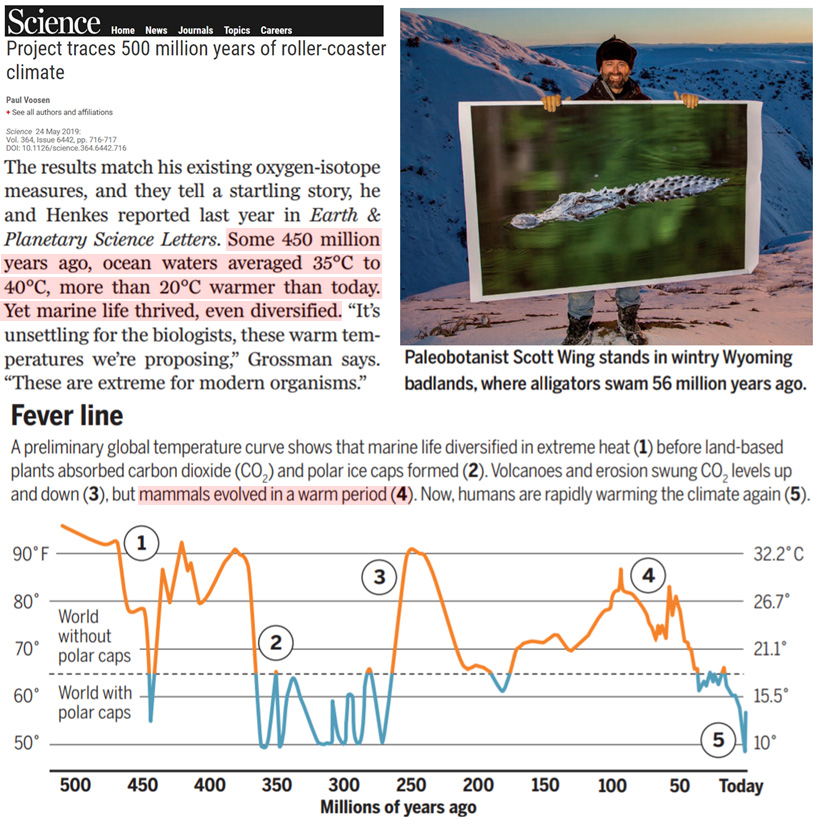
Image Source: Voosen et al., 2019 and press release
During the last 5.4 million years, CO2 has varied between 180 and 500 ppm (Fletcher et al., 2019). During the Pliocene (5.4 to 2.5 million years ago), Arctic temperatures were said to have been 22°C warmer than today (Fletcher et al., 2017) and tropical ocean temperatures were 3-6°C warmer than present (Wycech et al., 2020).
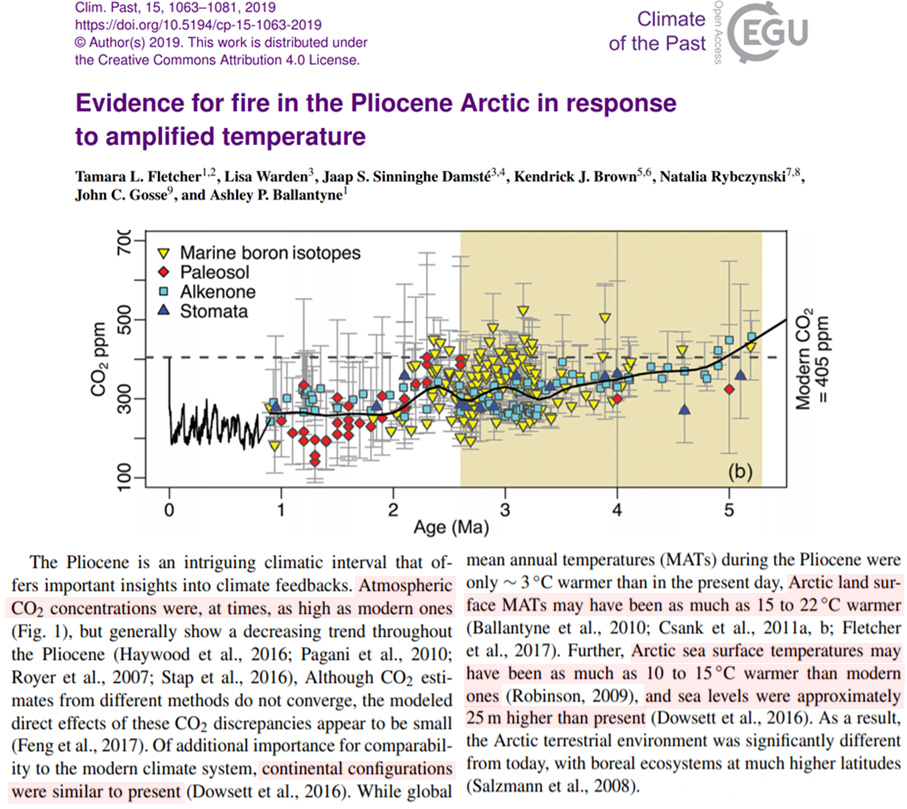
Image Source: Fletcher et al., 2019
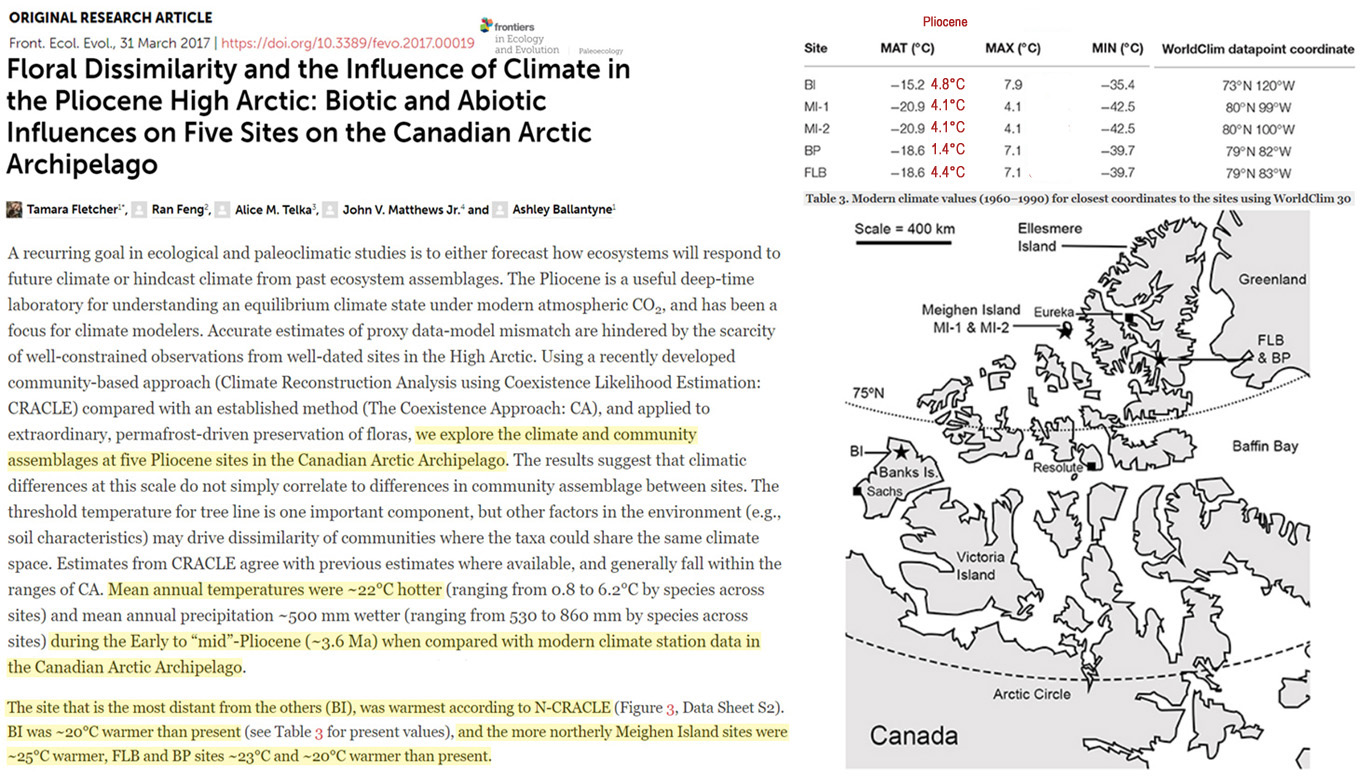
Image Source: Fletcher et al., 2017
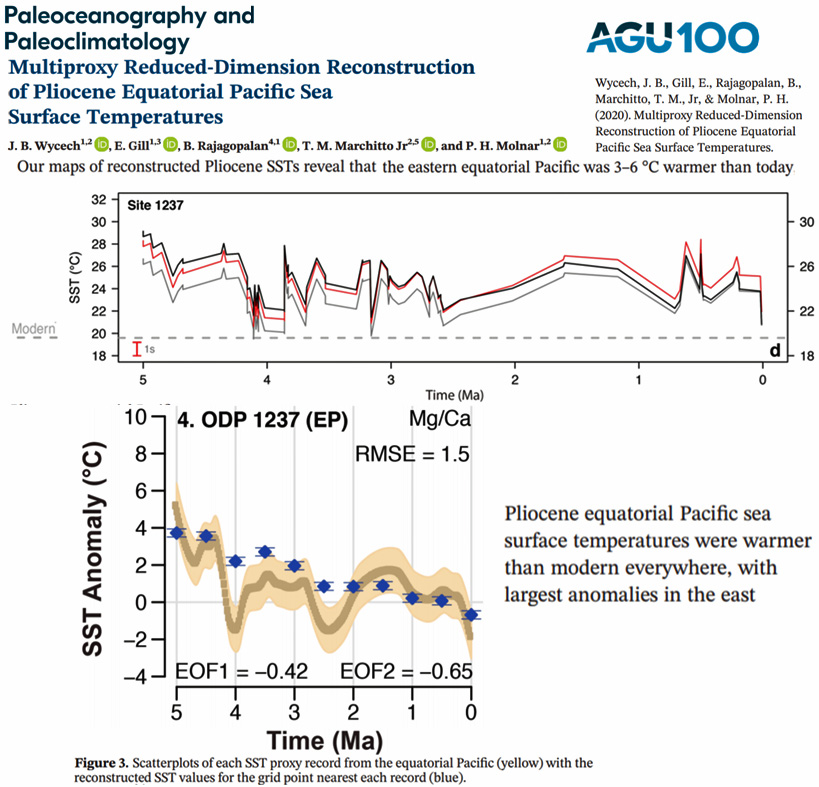
Image Source: Wycech et al., 2020
During the peak of the last glacial (the Last Glacial Maximum) 19,000 years ago, the Southern Ocean was 2°C warmer than it is today even though CO2 levels were a dangerously low 180 ppm at this time. This was also the same period when the Earth’s bottom water temperatures warmed up by about 2°C 1,000 years before the oceans’ surface began warming and CO2 began to rise (Stott et al., 2007).
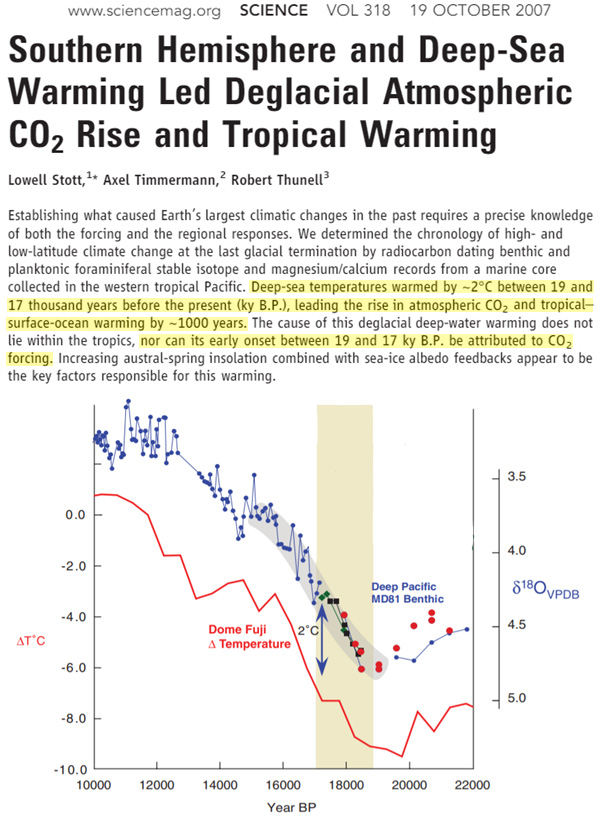
Image Source: Stott et al., 2007
As recently as 10,000 years ago, the Arctic Ocean’s bottom water temperatures were 6-10°C warmer than they are today (Beierlein et al., 2015).
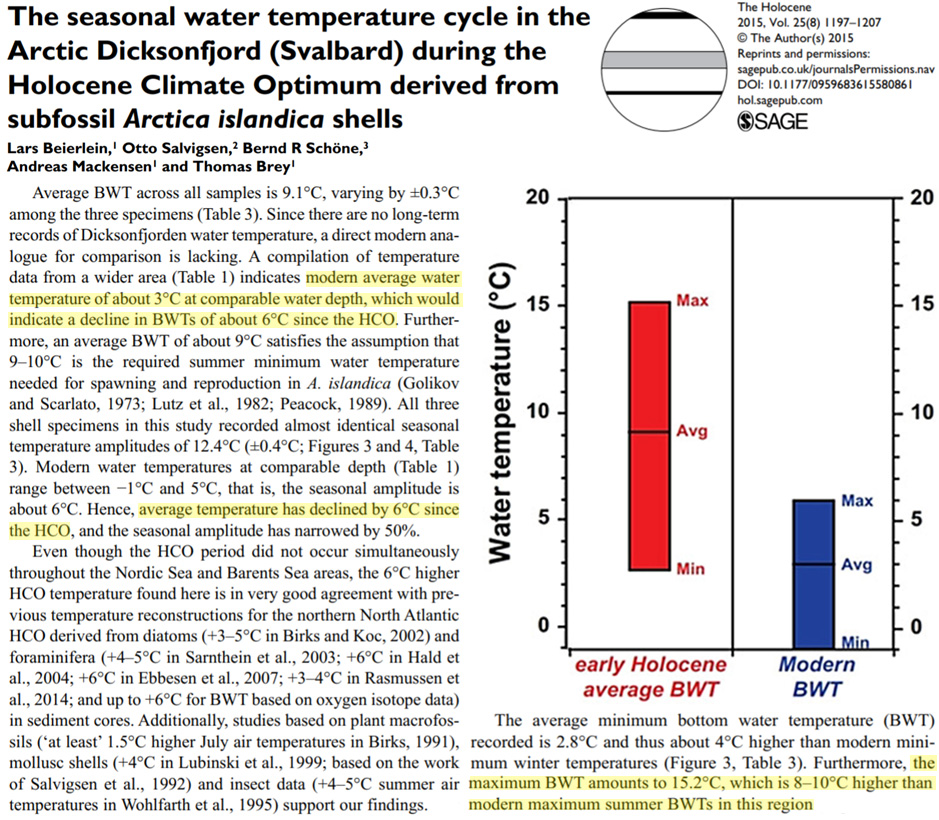
Image Source: Beierlein et al., 2015
Global ocean temperatures were still warmer than today througout nearly all of the last 10,000 years (Rosenthal et al., 2017), including the Medieval Warm Period (Gebbie and Huybers, 2019).
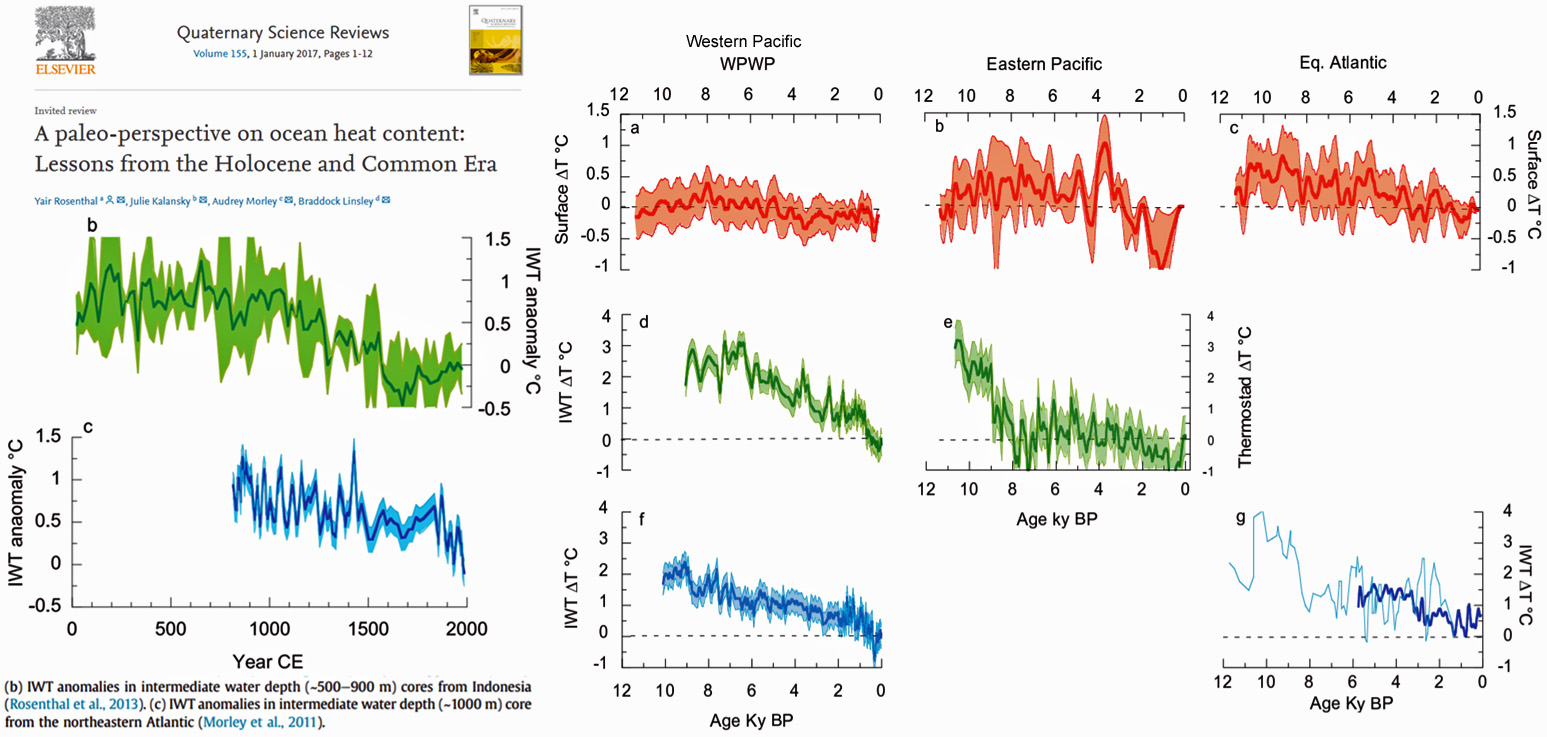
Image Source: Rosenthal et al., 2017
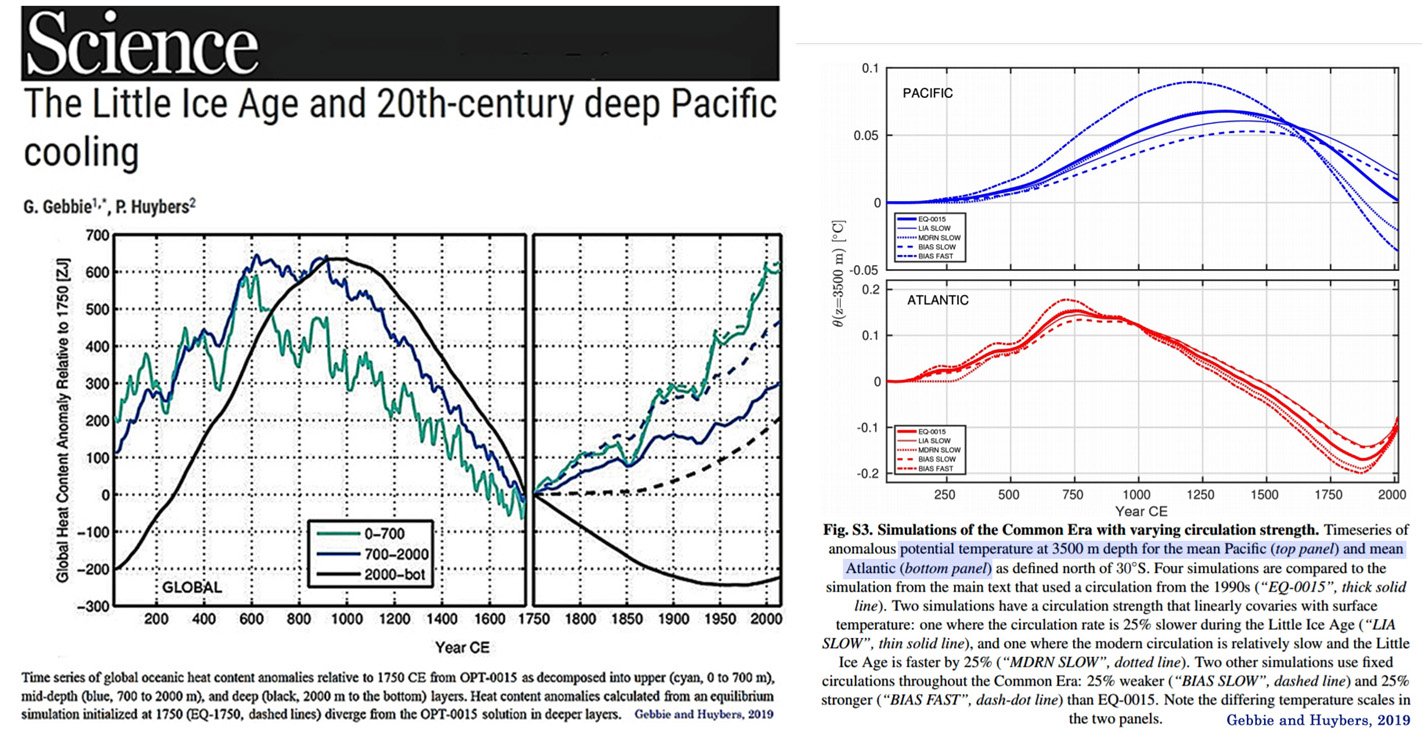
Image Source: Gebbie and Huybers, 2019
In sum, paleoclimate research strongly suggests there is nothing unprecedented or even unusual about ocean temperature changes in the modern era.





Project traces 500 million years of roller-coaster climate. Paul Voosen et al. Science 24 May 2019: Vol. 364, Issue 6442, pp. 716-717
Summary
“When it opens in June, the revamped fossil hall of the Smithsonian Institution’s National Museum of Natural History in Washington, D.C., will be more than a vault of dinosaur bones. It will show how Earth’s climate has shifted over the eons, driving radical changes in life, and how, in the modern age, one form of life—humans—is in turn transforming the climate. To tell this story, several Smithsonian scientists initiated an effort to chart Earth’s average surface temperature over the past 500 million years or so. But making the chart was unexpectedly challenging, and it has triggered a major research effort to reconstruct the record.”
Reasonable until, “one form of life—humans—is in turn transforming the climate.” But then it is both impolite and impolitic to upset the funders. Unfortunately, like GISS, the Smithsonian have long been drinking the climatism kool aid.
I wish, that those people would join forces with scientist from other generes. 56 million years ago, on the globe, where was wyoming? Interestingly, on the equator. So was it naturally warmer or colder then the north pole? Probably.did you or I influence the the movement of wyoming to it’s present placement? Did our monkey ancestors dig a pathway and push that cretin to it’s present position? They were lucky if they found an ant hill to poke a stick down.